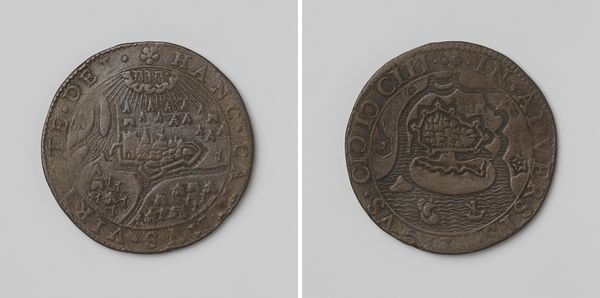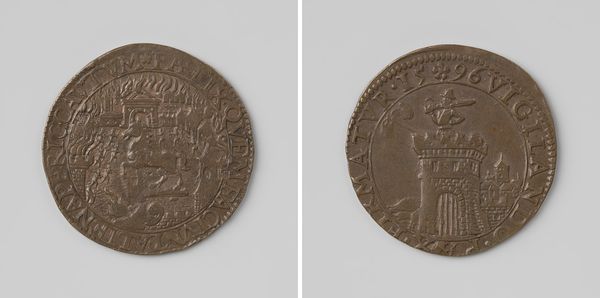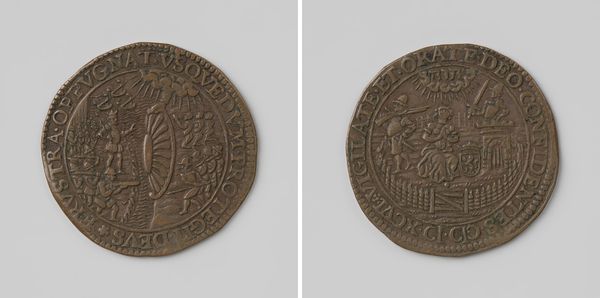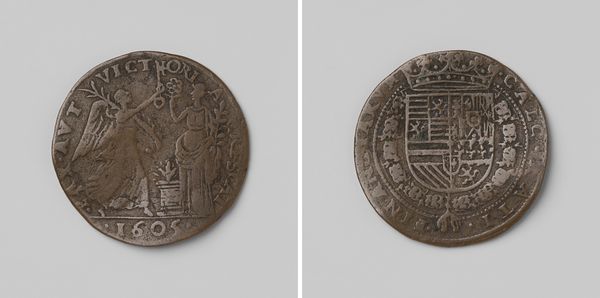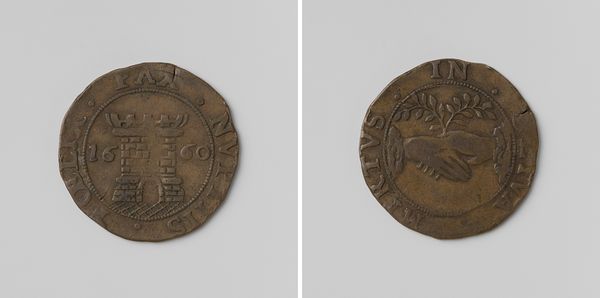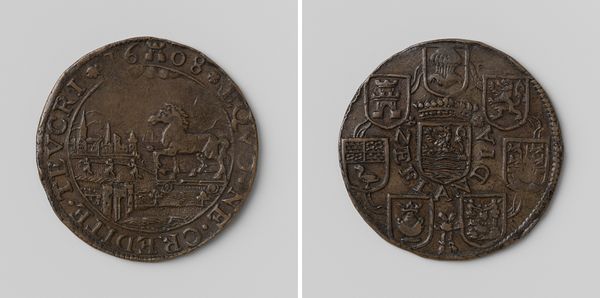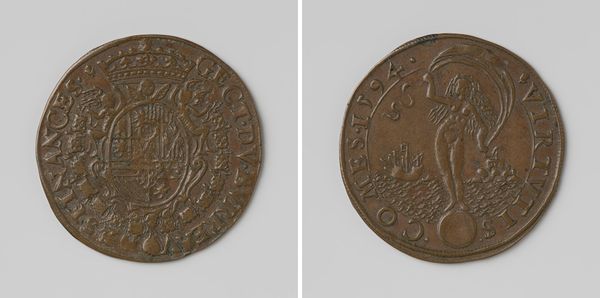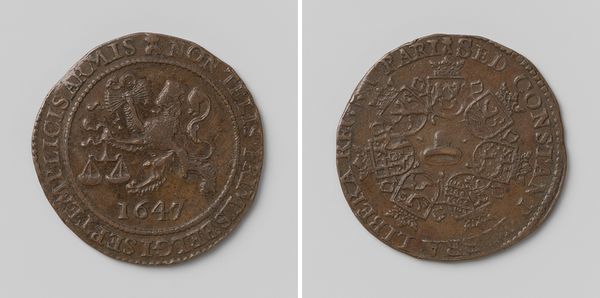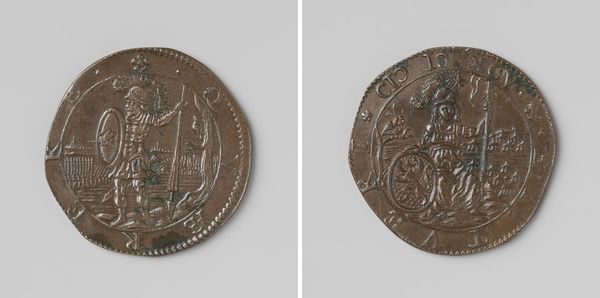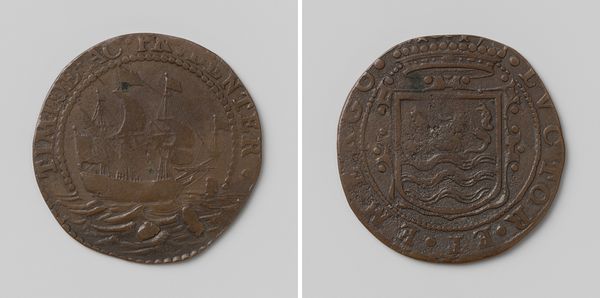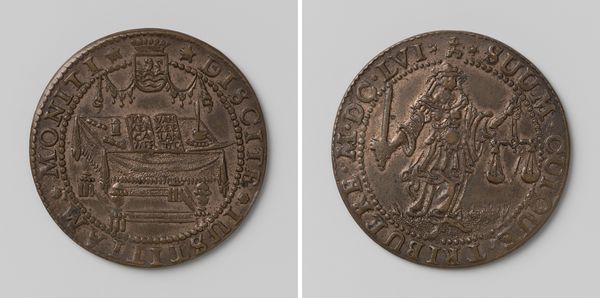
carving, print, metal, relief, sculpture
#
carving
#
narrative-art
#
baroque
# print
#
metal
#
sculpture
#
relief
#
sculpture
#
carved
#
history-painting
Dimensions: diameter 3 cm, weight 7.34 gr
Copyright: Rijks Museum: Open Domain
Curator: Today we're looking at "Maurits verhindert dat Mendoza bij Doesburg de IJssel oversteekt," or, "Maurice prevents Mendoza from crossing the IJssel at Doesburg," a relief carving dating from 1598. It’s made of metal and depicts a pivotal moment. My immediate response is how intricate and surprisingly dynamic the carving is. The detail crammed into this small, circular format is quite masterful. Editor: Intricate, certainly, but this dynamism speaks volumes about the propaganda and nationalist sentiment inherent to representing military victories during this era. This scene freezes a specific event within the larger context of Dutch resistance to Spanish rule, a very fraught historical landscape of oppression and revolution. Curator: Precisely. It’s a fascinating study in composition. One side presents Maurice thwarting Mendoza's crossing. The careful layering creates a sense of depth, even within the shallowness of the relief. We see the figures arranged spatially as well as hierarchically; I would point towards that lone, brave individual standing at the front of the scene repelling the masses with his weapon. Editor: Note, however, what such an overt visual statement elides; this carving offers an incomplete version of a much broader reality. Here the conflict becomes overly individualized in the figure of Maurits as it is divorced from the collective and structural problems facing this young country during wartime. These objects served less as documents of "history" than as artifacts promoting strategic narratives for both local and foreign viewership. Curator: But doesn’t this focus on a key turning point, the foiled river crossing, add impact? The artist uses such a high level of formal structure here, organizing narrative around that visual language to build up an extremely effective aesthetic that conveys victory to the audience through its use of dynamic figural positioning. Editor: And what vision of 'victory' is elevated, by what and for whom? These depictions and celebratory gestures mask the true costs and sacrifices during wartime for those most vulnerable. The visual spectacle, therefore, obscures systemic violence inherent in this representation of dominance and conquest. Curator: This pushes us to remember art never exists in a vacuum. What’s striking to me, though, is how effectively this metalwork uses its limited dimensions to suggest so much tumult. Editor: And its limited dimensions remind us it can't possibly contain the full truth. Its historical fingerprint is forever biased, reflecting specific power dynamics.
Comments
No comments
Be the first to comment and join the conversation on the ultimate creative platform.
